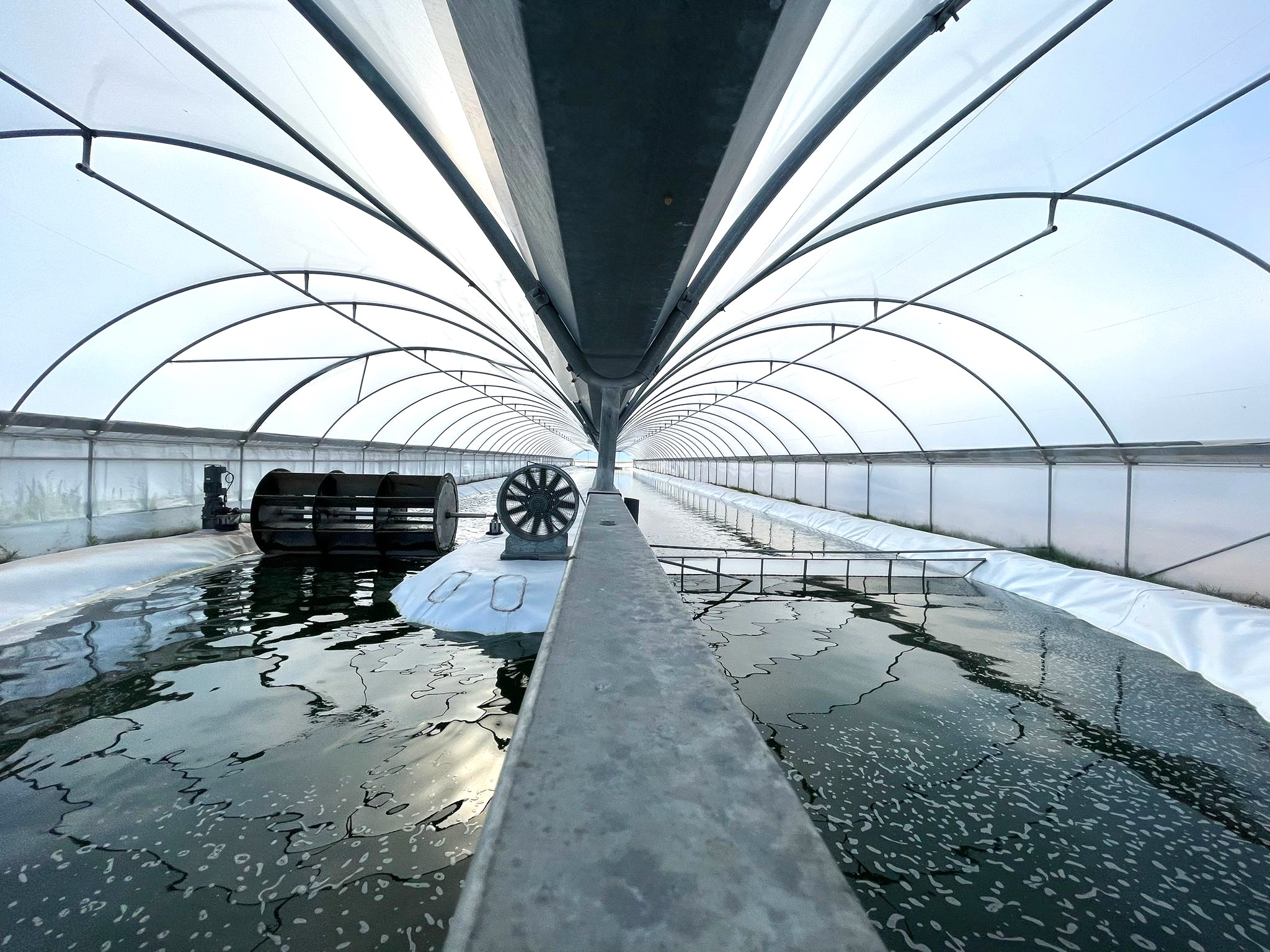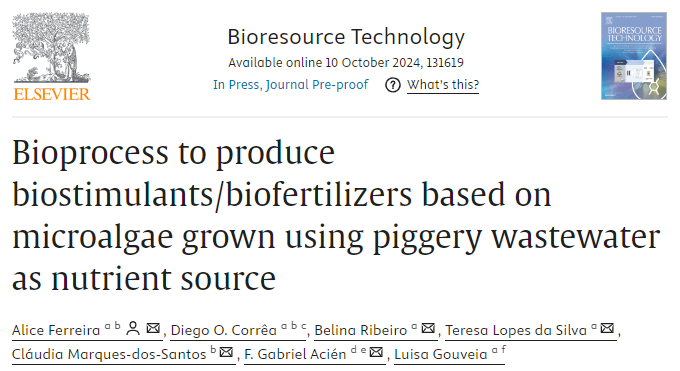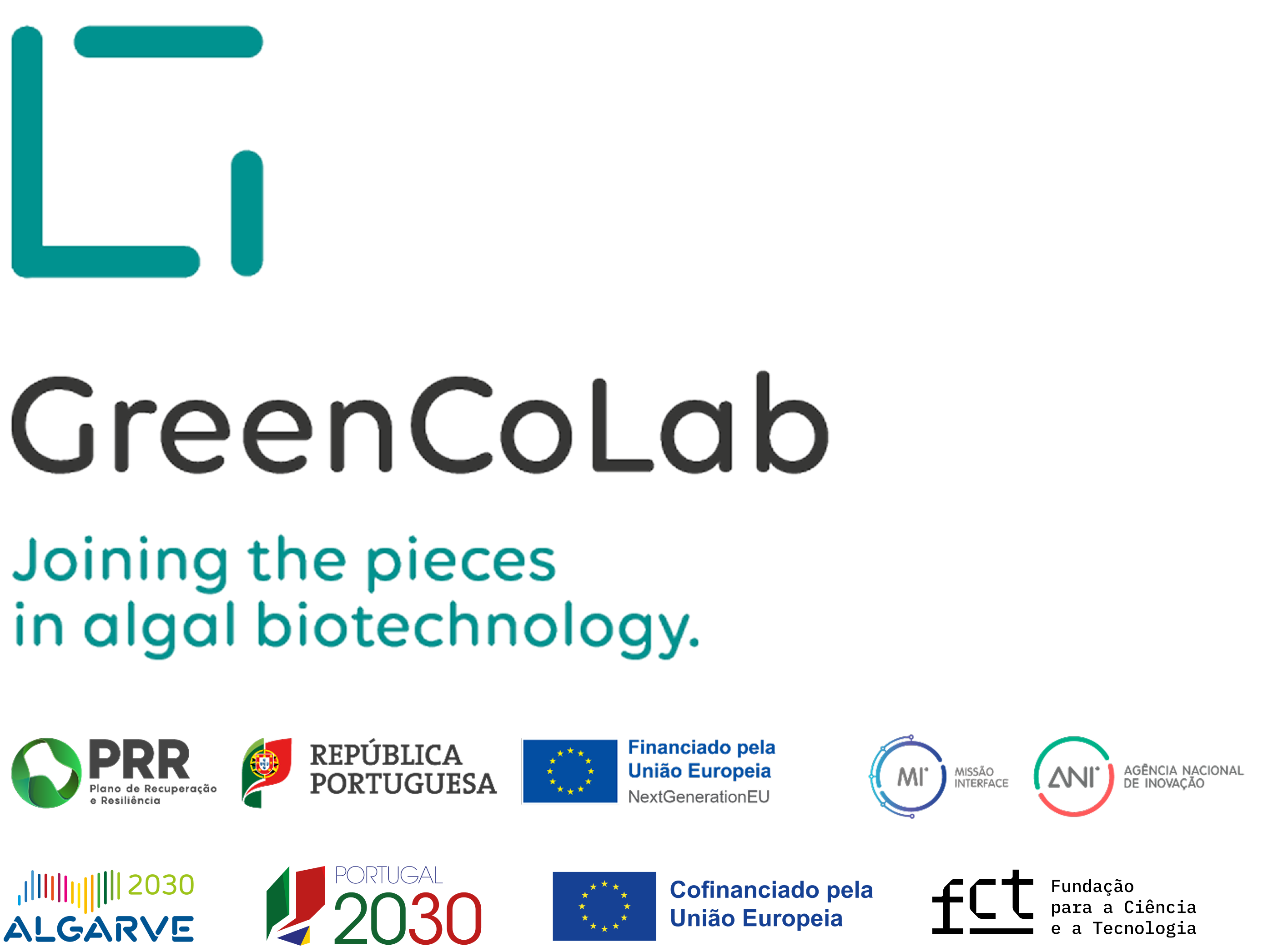

TITLE
Bioprocess to produce biostimulants/biofertilizers based on microalgae grown using piggery wastewater as nutrient source
JOURNAL
Bioresource Technology
AUTHORS
Alice Ferreira, Diego O. Corrêa, Belina Ribeiro, Teresa Lopes da Silva, Cláudia Marques-dos-Santos, F. Gabriel Acién, Luisa Gouveia
ABSTRACT
In the present work, two downstream processes − high-pressure homogenization at 100 (HPH-100) and 1200 bar (HPH-1200), and enzymatic hydrolysis (EH) − were tested to produce biostimulant extracts from Tetradesmus obliquus grown in piggery wastewater at two concentrations (12.8 and 88.3 g/L). Extracts before and after centrifugation (C) were evaluated in four bioassays using garden cress (germination), mung bean (auxin-like activity), and cucumber (auxin- and cytokinin-like activity) relative to distilled water. The initial microalgal culture, without any treatment, had the best germination results (162 % at 0.2 g/L) and the only one that showed cytokinin-like activity (141 % at 0.5 g/L). In both auxin-like bioassays, the HPH-1200 + C and EH + C originated high values (186 and 155 % for cucumber, 290 and 285 % for mung bean, respectively). For mung bean, the HPH-1200 achieved the highest auxin-like effect (378 %). Finally, the extracted biomass contained essential nutrients for biofertilization, complementing the biostimulant extracts for sustainable agriculture application.



